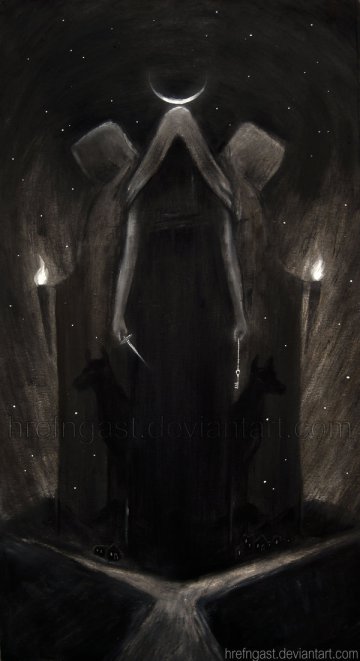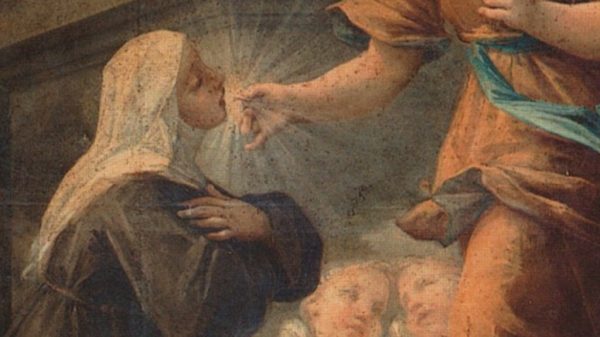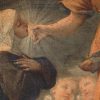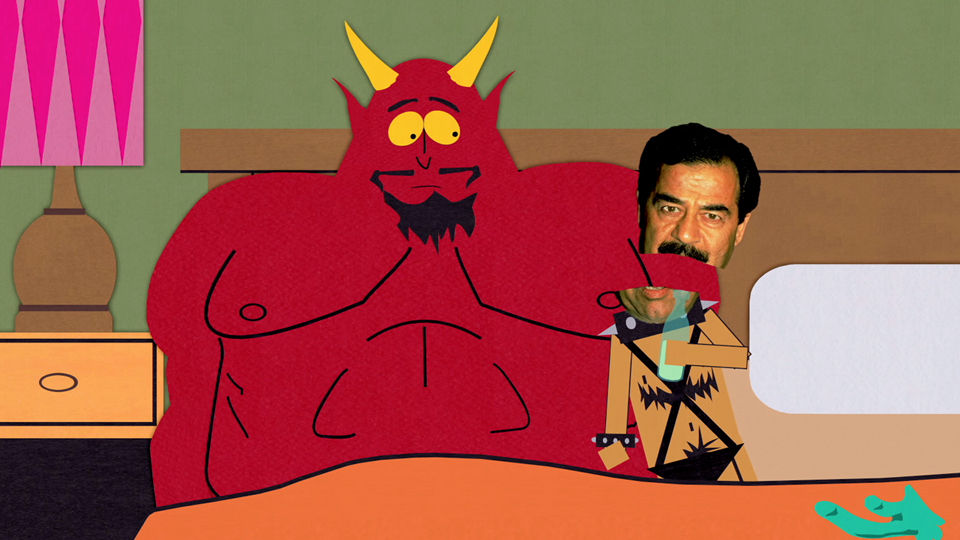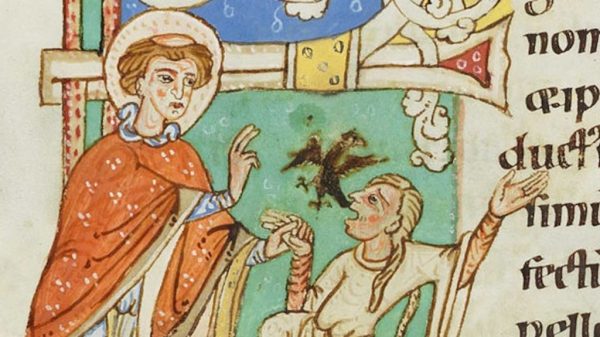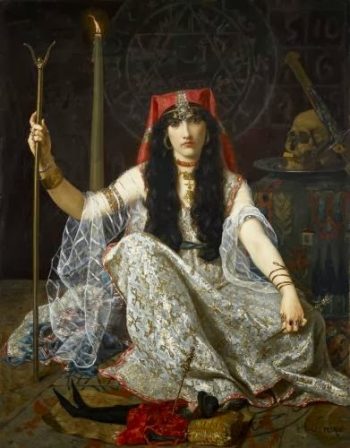
…I adjure you, dead spirit, by the powerful and inexorable god and by his holy names, to stand beside me in the coming night in whatever form you used to have, and inform me whether you have the power to perform the NN deed; immediately, immediately; quickly quickly!
Then go quickly to where (someone) lies buried or where something has been discarded, if you do (not) have a buried body; spread the hide under him about sunset. Return (home), and he will actually be present and will stand beside you on that night. And he describes to you how he died, but first he tells you if he has the power to do anything or to perform any service – Greek Magical Papyri, IV. 2006-2125
For those matters then which appertain unto the Moon, such as the Invocation of Spirits, the Works of Necromancy, and the recovery of stolen property, it is necessary that the Moon should be in a Terrestrial Sign, viz.: – Taurus, Virgo, or Capricorn. – The Key of Solomon the King
Then it is done. And Jonathan has a new oracular skull, a direct line to the gods, a hotline for the most pressing questions – access other humans simply have not got. He wraps the head in a cloth consecrated with god-names and magical symbols, binds it with chains and places it inside a box painted with hexagrams…Jonathan will sanctify the head and make a home for his new collaborator on a fresh altar. And over the coming years, he will call gods and demons through the skull, and through the once-human soul bound to it, and he will ask for many things – for money, and revenge, and a clear message from the gods themselves, about their true nature – Witches of America, Alex Mar
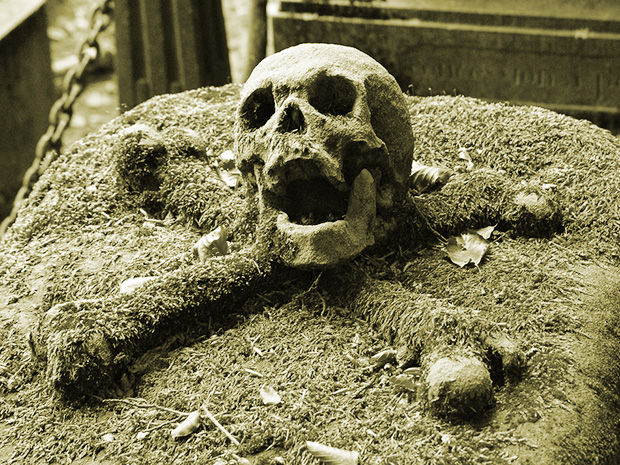
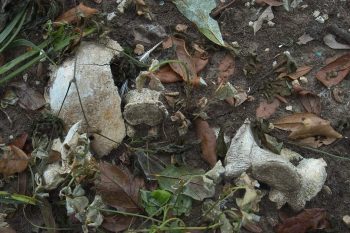
With the spread and popularization of occult practices that transcend the “and it harm none” world of Wicca and its new age consorts, necromancy seems to be having a moment. Recently, a witch in Louisiana by the name of Ender Darling was arrested for trafficking in human remains and burglary of a cemetery after taking bones she found while walking through a pauper’s cemetery in New Orleans. According to Darling, the bones had been expelled from the earth, a not uncommon occurrence in New Orleans’ cemeteries with below-ground burials, due to the city being below sea level. In a posting on a private witchcraft Facebook group, Darling described simply walking around and finding “femurs, teeth, jaws, skull caps, etc. etc.” She said that she would use bones for “curse work and general spells that require bone,” explaining that she and her goddess had a pact in which “She provides the bones if I only take what the earth gives, and I leave offerings.” She also offered to ship bones to others as she usually had “leftovers.” While some were accepting of Darling’s practice, others were not so understanding, accusing her of everything from grave desecration to racism (it was assumed that the graveyard she was taking bones from contained many unnamed African and Haitian descendants, and Darling appears white, although she identifies as a person of color). Eventually, the whole thing fell down the rabbit hole of social media and Darling ended up becoming something of a meme on Tumblr. Her newfound notoriety lead to a literal witch hunt by authorities that ended with charges being filed against Darling and the Louisiana Legislature over-reacting, as legislatures often do; drafting the Louisiana Human Remains Protection and Control Act, making it illegal to possess human bones entirely, outside of a family, medical or museum setting.
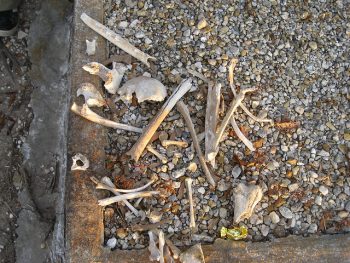
Earlier this year, the story became a brief internet sensation, penetrating mainstream media sites such as Buzzfeed and the Washington Post, earning it the oh-so-cute nickname “Boneghazi.” As one would expect, reaction among their readers was a mixture of disgust and bemusement. What was maybe a little more shocking was the reaction from Wiccans and other self-described witches which kicked off the whole campaign against Darling. While some found the incident to be rife with issues of cultural appropriation, race, gender and class politics (all of which, while valid issues, are beyond the scope of this article), others were appalled with what they deemed to be “black magic.” The vehemence with which some within the witchcraft community attacked Darling is indicative of a serious gulf that exists between “white light” Wiccans and traditional witchcraft, which is known to work with human bones for a variety of purposes, particularly necromancy.
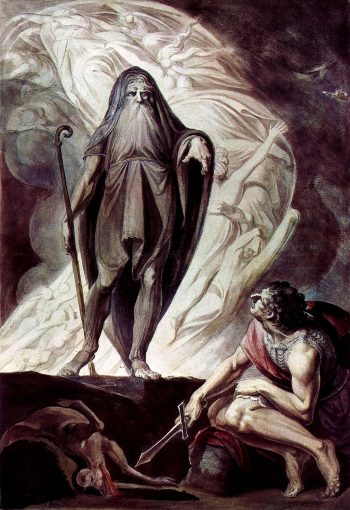
Necromancy, or divination by means of the dead, is one of the oldest occult practices known to humankind. Like most ancient practices, it appears in both Homer’s Odyssey and the Bible. One can find specific instructions on how to conjure spirits of the dead in the Greek Magical Papyri. The basic practice in ancient Greece was similar to their burial rites, except rather than laying the dead to rest, one was soliciting their aid. The general rite was to dig out a pit, make a fire in it, offer honey, milk, oil, or wine, then grain and flowers, after which a sacrifice of a black animal was to be made along with prayers to the chthonic gods, such as Hecate. This practice was aimed at attuning those seeking assistance with the dead, particularly the “restless dead.” The “restless dead” were those who did not receive a proper burial, or who died violently or too young, and who were believed to be readily accessible for necromantic rites. As a result, battlefields were a boon to necromancers, who could easily recover body parts of the restless dead for their magical workings.
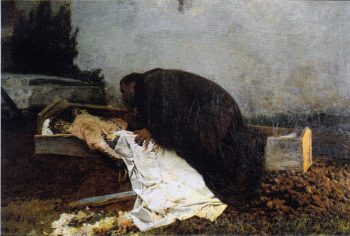
The use of body parts was a cornerstone of necromancy, as it was believed that one could call to the soul through one’s remains, particularly of the newly deceased. It was believed that the fresher the corpse, the clearer the line of communication with the dead would be. As a general rule, the body was not sought as a conduit after the first year of death. Instead, the necromancer would evoke the spirit of the deceased through various methods, ranging from simple invocations to elaborate rites that could last many days. At the extreme end of the practice, the necromancer would surround themselves by death; wearing clothes from corpses, eating and drinking spoiling or rotten food, and even consuming the flesh of the dead. Some also engaged in necrophilia, with the belief that sex and sexual secretions could reanimate the dead.
Eventually, practices evolved to include the use of wax dolls as vessels for the spirits. The use of these dolls appears to be the forbearer of the poppets and voodoo dolls of modern practitioners. The purpose of necromancy ranged from gaining knowledge and wisdom to using the dead to destroy an enemy. Not surprisingly, the Abrahamic religions took a rather dim view of the practice. Deuteronomy explicitly warns the Jews against the magical art, while Leviticus prescribed the death penalty for necromancers.
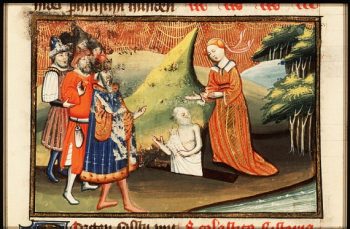
Ironically, though, it was the Catholic Church of the Middle Ages that made it possible for the continued development of necromancy. Despite the dark art being condemned by the Church, it was the clergy who would sustain its practice and further its evolution. Because the Church refused to believe that anyone but God had the power to resurrect a body or even intentionally contact a spirit, they concluded that necromancers were not actually communicating with the dead, but with demons who deceived the magicians into believing that they were the souls of the dead. Nevertheless, the temptation to do the devil’s work was too much for some members of the clergy to resist, and using their exalted position they were allowed access to the esoteric knowledge necessary to engage in necromancy. The Church had taught their clerics how to read Latin and educated them in all manners of Christian and Jewish teachings, sometimes including demonology, exorcism, and the Arabic art of astrology. The end result was a continuation of the basic rites of ancient Greece, but with additional layers of demonic invocations performed in accordance with specific astrological timing and phases, since it was now believed that it was demons and not the dead they were invoking through the necromantic arts.
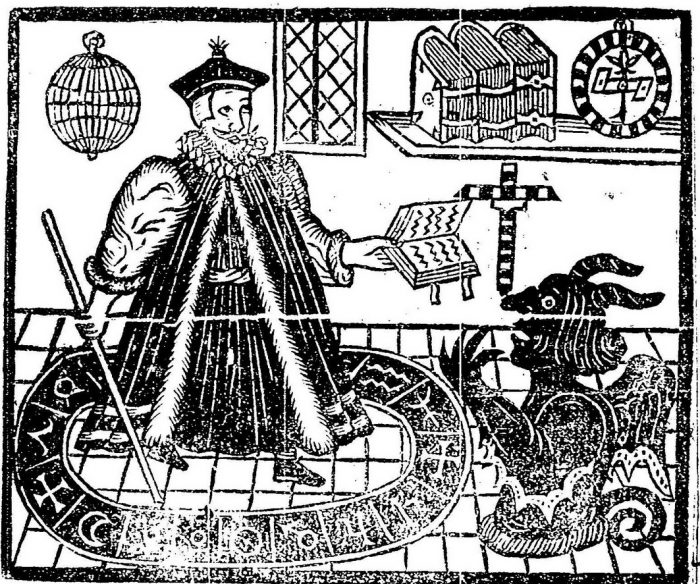
Of course, invoking demons is fraught with danger, so Christian necromancers took precautions to protect themselves from harm, both physically and astrally. Aside from the litany of prayers, they invoked angels, made offerings and sacrifices, and employed protective circles marked with various occult symbols, letters and sigils. Amusingly enough, these dark Christian rites are the genesis of ceremonial magic.
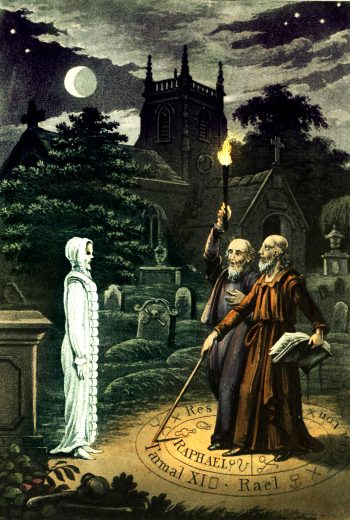
A word should be said about the purpose of offerings and sacrifices. In necromancy, it is believed that neither spirit nor demon will be too happy being aroused for the purpose of employment in the service of a magician. There will likely be the need to bind the being in order to protect oneself from it. Furthermore, these are hungry ghosts and they will seek to feed off of whatever source of nourishment is available – including one’s own being. Therefore, by making a blood sacrifice alongside desired food and drink, the entity will feed off of those offerings instead of one’s soul. Ideally, if the entity is satisfied with such offerings, the necromancer can then work with the spirit in a cooperative manner, rather than as an adversary. Nevertheless, there is always the risk of harm, which is why necromancy is nothing to be approached lightly, and sometimes requires a bloody price to pay.
With the rise of Spiritualism in the 1800s, a kinder, gentler form of necromancy evolved. Instead of dead bodies, live mediums acted as conduits for the dead. This did not end the use of human remains in the necromantic arts though, nor did it end the use of ceremonial practices to summon the dead. In 1970, Paul Huson published his groundbreaking and controversial work Mastering Witchcraft, a book that was (and still is) as denounced by Wiccans as it was by Christians. In it, Huson lays out the basis for a traditional witchcraft practice not bound by Wicca’s “Rule of Three.” This “rule” holds that whatever energy you put into the universe will return to you three-fold. Implicit in the “Rule of Three” is a prohibition against black magic. Huson’s work, as with nearly all traditional witchcraft traditions, promoted the idea that a witch should have the power to cure and to kill, which was anathema to Wicca, which was (and still is) so desperately seeking acceptance and approval from mainstream society.
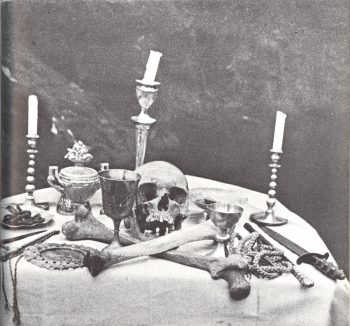
One of the many highlights of Huson’s book is the detailed “Necromancy of Intelligence” rite. Clearly very ceremonial in nature, the ritual includes the use of a human skull, although Huson allows that a replica can be used if a real one is unavailable. Huson’s work made it clear that necromancy was part and parcel of new world traditional witchcraft, despite how it looked to outsiders and fellow pagans who attempted to suppress the dark side of the craft they so willingly laid claim to otherwise. To this day the use of bones and necromantic arts are very much a part of traditional witchcraft practices. “Tapping the Bone” is one such practice, which entails the use of a skull to invoke the witch’s ancestors.
More notorious, though, is the continuation of the type of necromancy used to invoke demons through the dead. Last year, Alex Mar’s Witches of America caused a bit of a stir for a variety of reasons, one of which was the chapter “Sympathy for the Necromancer.” An account of a modern-day grave-robbing black magician in New Orleans, the chapter portrays “Johnathan” (a pseudonym) and his band of merry magicians who break into graveyards and steal remains in order to bind the spirit of the dead and draw demons through them to do their bidding. Johnathan and his crew allegedly have a warehouse full of heads and other various body parts which they maintain dominion over through ceremonial magic. Some have questioned the veracity of the tale, but evidence uncovered in the research for this article makes this author believe it to be very much true.
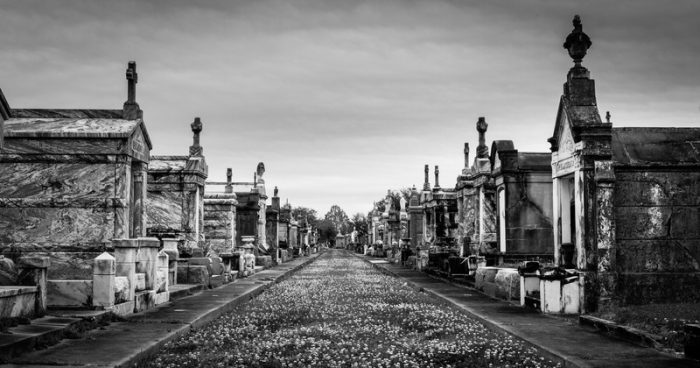
Then there is Ender Darling. Although she claims to have never engaged in necromancy, her use of human bones in magic is undeniable and a flash point for so many ethical questions surrounding the practice. How, in this day and age, when pagan practices are the exception and not the norm, does one obtain bones by which to work with? One way has been to purchase them from medical supply companies, but even then the witch is tapping the bone of a person unknown to them, and whose spirit may be none too happy with being drawn into their workings, if that is, indeed, one of the effects of such rites. Given the secret and marginalized nature of the art, the line seems to be drawn differently between each witch and magician who would work with the dead. Of course, white light witches will have nothing to do with such trespasses, for fear of damage to their precious karma (but seem to have no problem disregarding their adage of “and it harm none” when it comes to causing the arrest of someone who dares tread in the places they fear); but regardless of what one thinks of her, Darling was right about at least one thing. In one of her final posts on social media she wrote, “Magic is dark. Magic is bloody. Magic is scary. Magic isn’t just fucking white light, fairy dust, bowls of honey on your damn altar.” Unlike most things Wiccan, she has a few thousand years of continuous magical tradition on her side to back that up.
